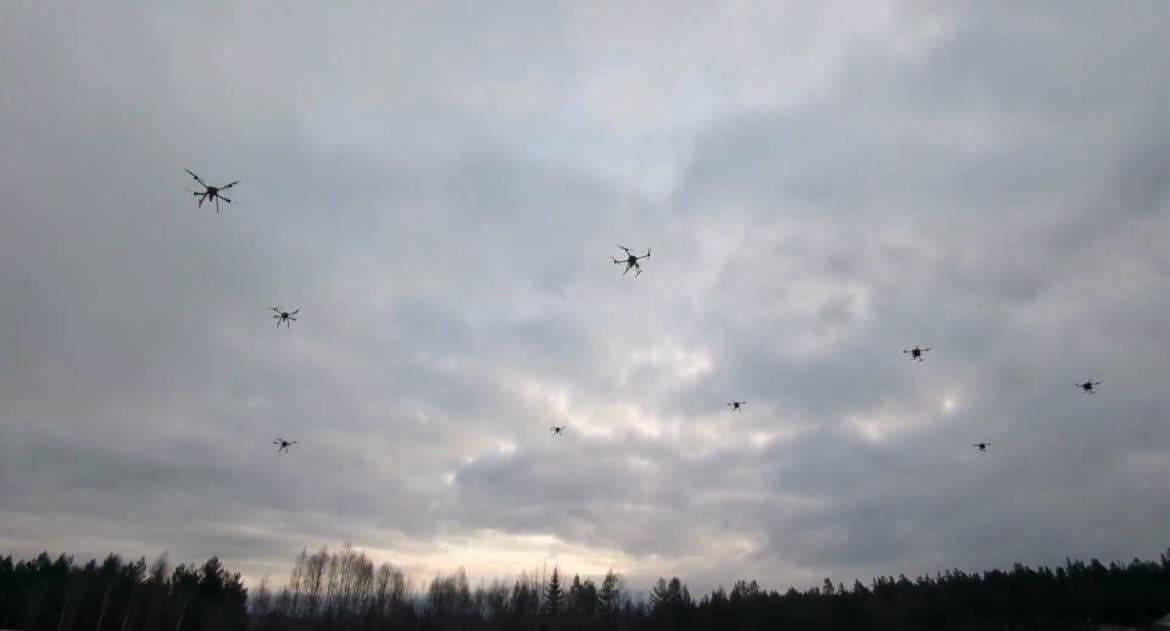
In a significant stride towards modernizing its defense capabilities, Sweden has unveiled a groundbreaking initiative involving swarms of aerial drones designed to augment the operational effectiveness of its armed forces. This development, announced by Swedish Minister for Defense Pal Jonson on January 15, marks a pivotal shift in the nation’s approach to battlefield intelligence and surveillance. These drone swarms, working in unison, promise to provide an unprecedented level of situational awareness, revolutionizing how the Swedish military gathers and processes information in real time.
The Technology Behind the Swarm
At the heart of this innovative project lies a sophisticated network of quadcopter drones, demonstrated in a recent video released by the Swedish Government. The footage showcases a formation of ten drones taking flight, transmitting high-resolution imagery of their surroundings to ground operators. This visual data, coupled with artificial intelligence-driven analysis, allows military commanders to gain immediate insights into the operational environment. The drone’s AI capabilities enable it to process and interpret data, offering actionable intelligence that can significantly speed up decision-making processes. This “eyes and ears” capability in the sky is poised to be a game-changer for securing perimeters and conducting reconnaissance missions.
Saab’s Contribution: Software and System Integration
While Saab does not manufacture drones, its contribution has been pivotal in developing the command and control software that orchestrates the swarm’s operations. A spokesperson from Saab detailed the versatility of drone swarms, explaining that individual UAVs within the swarm are equipped with varying capabilities, including different sensors, payloads, and communication capacities. A single operator controls these swarms, assigning tasks to one or more groups via a mobile device, demonstrating the system’s user-friendly interface and operational flexibility.
Global Context: The Rise of Drone Swarms in Modern Warfare
The interest in drone swarm technology extends beyond Sweden and NATO. Militaries around the world are exploring both the opportunities and challenges presented by these systems. The head of Ukraine’s defense-technology hub, Brave1, recently identified drone swarms as a top priority for Kyiv in 2025, highlighting their growing importance in modern warfare. Ukrainian drone units are reportedly moving beyond the traditional one drone, one operator model and are looking to transition towards drone swarms this year. This shift underscores the evolving nature of aerial warfare, where swarms of interconnected drones can offer a tactical advantage over conventional methods. However, the use of drone swarms is not without its challenges. One of the key limitations is the relatively short flight time of the small, short-range drones typically used in swarms, which is often limited to around 30 minutes. Despite these limitations, the strategic advantages offered by drone swarms, such as enhanced surveillance capabilities and the ability to overwhelm enemy defenses, make them a valuable asset in modern military arsenals.
A Glimpse into the Future of Warfare
Sweden’s unveiling of its drone swarm technology is a significant milestone in the evolution of modern warfare. The collaborative effort behind this initiative, coupled with the rapid development and deployment of the technology, underscores the country’s commitment to embracing cutting-edge solutions for defense. As drone swarms become increasingly prevalent on the battlefield, they are poised to reshape military strategies and operations around the world. The interest from other NATO countries and the ongoing developments in Ukraine further highlight the global significance of this technology. While challenges remain, particularly in extending the operational range and endurance of these systems, the potential benefits of drone swarms are undeniable. Sweden’s initiative offers a glimpse into the future of warfare, where intelligent, interconnected systems play a crucial role in securing national and international security.
